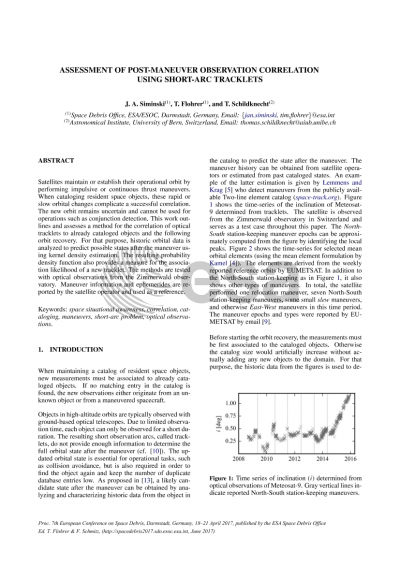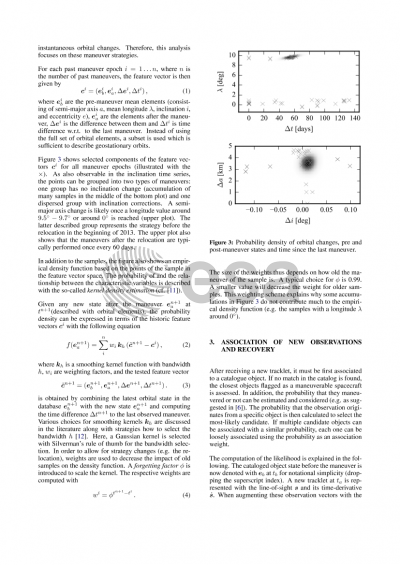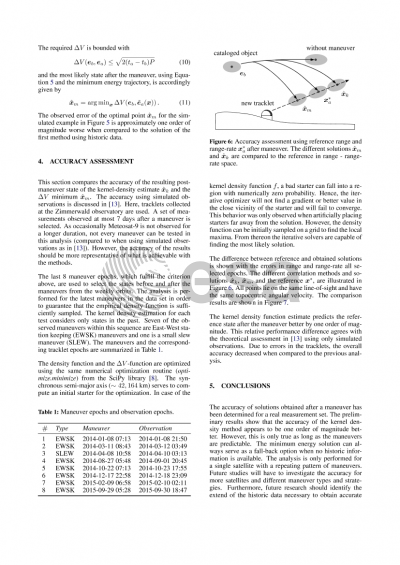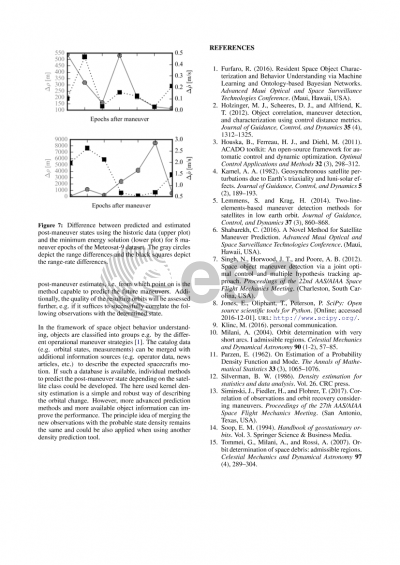Document details

Abstract
Satellites maintain or establish their operational orbit by performing impulsive or continuous thrust maneuvers. When cataloging resident space objects, these rapid or slow orbital changes complicate a successful correlation.
Short optical observations arcs, so-called tracklets, do not provide enough information for an independent orbit determination. Hence, multiple of these arcs are required to recover the orbit after the maneuver. The new orbit remains uncertain and cannot be used for operations such as conjunction detection.
This work outlines and assesses a method for the correlation of optical tracklets to already cataloged objects and the following orbit recovery. For that purpose, historic maneuver data is analyzed to predict possible states after the maneuver using kernel density estimation. The resulting probability density function also provides a measure for the association likelihood of a new tracklet.
The methods are tested with optical observations from the Zimmerwald observatory. Maneuver information and ephemerides are provided by the satellite operator and used as a reference.
Preview







